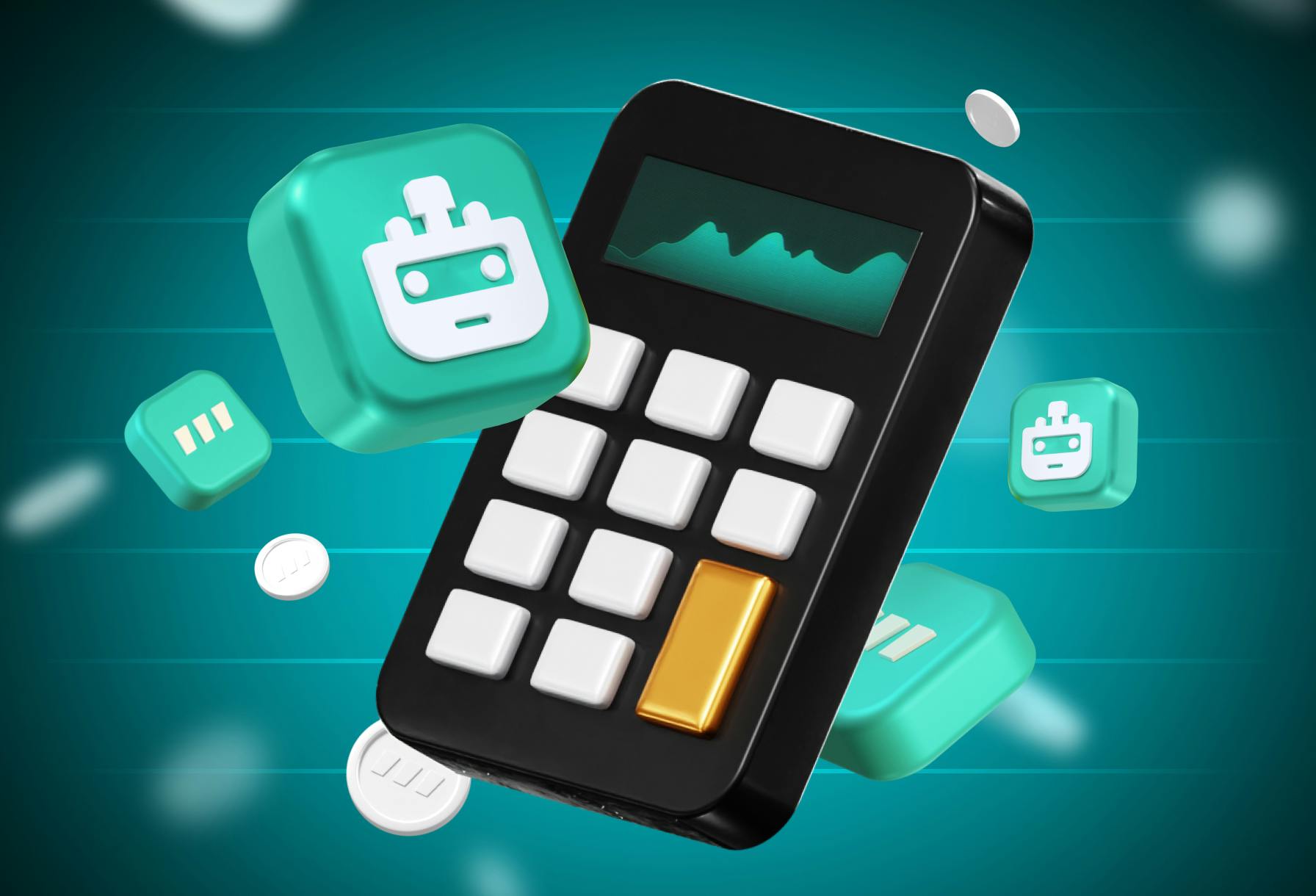
- All
- Tools
- Analytics
- Technical Analysis
- Trading
- Blockchain
- DeFi
- Guides
- Company News
- Educational
- Opinion
- Price Predictions
- Market News
- News
- Trading cases
- Practical guides
- Exchanges
- Trading signals
- Cryptocurrency
- Crypto bots
- Other
Become a crypto master
Learn everything about crypto,
trading and bots

9 Useful Day Trading Tips From the Experts
Day trading is a popular trading strategy. Here are some of the best day trading tips that you need to know to get the best results from your trading career.
- What is Day Trading?
- Best Day Trading Tips
- Why Day Trading is Difficult
- How to Figure Out What and When to Buy
- How to Figure Out When to Sell
- Day Trading Charts and Patterns
- How to Reduce Your Losses When Day Trading
- Basic Day Trading Techniques
- The Easiest Strategy for a Beginner
- Is Day Trading Ideal for Beginners?
- Which is Better for Day Trading; Technical or Fundamental Analysis?
- Why it is Hard to Make Profits Consistently from Day Trading
- Should You Hold a Day Trading Position Overnight?
- Conclusion
Start Trading on 3Commas Today
Get full access to all 3Commas trading tools with free trial period

Day traders don’t care whether the market rises or falls as a whole. They are examining the various assets available for trading. Day traders can make money whether the market goes up or down.
As a day trader, whether you buy or sell depends on several factors, including the direction of prices that day and your trading strategy as a whole. Most day traders use price charts to plan their trades, which they then carry out through a brokerage account.
This article will explore some of the best day trading tips that will help you in your day trading journey.
What is Day Trading?
Day trading refers to the practice of opening and closing trades within the same trading day. Day trading strategies are more dynamic and require traders to stay at their trading stations and watch the live price charts throughout the trading session.
Day trading is thought to be one of the riskiest ways to navigate the financial markets because traders are exposed to more risk over shorter periods. The rules for day trading can be quite stringent. Since there are more trades, mistakes are more likely to happen and cost more when they do.
Best Day Trading Tips
Knowledge is Important
One of the best day trading tips is to invest in knowledge. Day traders need to be well-versed in both day trading procedures and the most recent news and events affecting the market. You should make a list of the assets you'd like to buy and sell.
Learn as much as you can about the markets and the companies you've chosen to invest in. Read the business section of the newspaper and bookmark reputable online news sites.
Commit to a Specific Amount of Capital
Another important day trading advice is to determine how much of your trading capital you are willing to risk in each transaction. Many profitable day traders invest between 1% and 2% of their total capital with each trade to minimize their exposure.
Reserve Some Time
Your time and focus are needed for day trading. As a result, a significant portion of your day will have to be sacrificed. If your free time is tight, don't even think about day trading.
Start Small
As a beginner, you should limit your attention to no more than one or two cryptocurrencies at a time. A smaller portfolio makes it easier to monitor performance and identifies profitable trades. This is an important day trading advice that you shouldn’t ignore.
Don’t Place Trades Out of Emotions
When day trading, it's easy to let your emotions get the best of you and make rash decisions in response to good or bad news. However, this can cause one to make poor choices.
One of the best day trading tips is to be consistent in your approach when deciding whether to buy or sell. As a day trader, you need to understand that logical decisions can yield better results than acting on impulse.
Time Your Trades
As soon as the markets open, many orders that investors and traders place begin to execute and this can cause sudden swings in price. A skilled trader can profit in the open by spotting patterns and strategically placing orders.
However, it is recommended that newbies wait for at least 15 to 20 minutes before making any trades to read the market and determine whether or not to enter the market.
Although the busiest times of day can present excellent opportunities, beginners are better off avoiding them at first.
Reduce Losses With Limit Orders
Set your orders for entering and leaving trades. In the absence of a specific price requirement, a market order will be filled at the current best available price. This works well when you merely wish to enter or exit the market and are not concerned with being filled at a specific price.
However, the execution of a limit order is never guaranteed. Since you determine the limit price at which your order will be executed, limit orders can help you trade with greater precision and assurance.
Reduce your potential loss from price reversals by using a limit order. With a limit order, your order will not be executed immediately, and your position will be preserved if the market doesn't meet your price.
Set Realistic Profit Targets
Another important day trading advice is to understand that your day trading strategy does not need to be successful every time for you to be profitable. Even the most successful traders only win half or more of their trades.
However, the profits from the winners offset the losses from the losers. Limit the amount of money at risk in each trade to a manageable amount, and have a plan for when and how to get out of the trade.
Adhere to the Plan
If you want to be a successful day trader, you need to move fast, but you don’t have to think fast. This is because you need to prepare a trading strategy and be disciplined to follow it. Sticking closely to your strategy is more important than chasing after profits.
Don't give in to the temptation to let your feelings cloud your judgment and cause you to abandon your plan. Always planning your trade and trading your plan is an important day trading advice that you should pay attention to.
Why Day Trading is Difficult
Now that we’ve covered the best day trading tips that day traders need to adhere to, let’s consider why it is difficult to day trade.
Day trading is challenging for several reasons such as:
Different Driving Factors
Since the movements of financial assets are driven by several factors, it can be challenging for the average person to make sense of them. The price of a crypto asset may fall after a particular news has been released. When this occurs, it's usually because the asset is not favored by the news.
Multiple Concepts
Day trading is also difficult because it requires a thorough understanding of a wide range of concepts. For instance, you need to be familiar with technical and fundamental analysis.
Volatility
The financial market's tendency toward extreme swings can be challenging to navigate.
Impatience
New traders can be prone to impatience as their careers progress. They are eager to get things going today so that they can reap the benefits tomorrow. A day trader's success depends on his or her ability to exercise patience.
How to Figure Out What and When to Buy
What to Buy
Crypto day traders aim to profit from small movements in the prices of various cryptocurrencies. As a rule, they use a lot of borrowed money to do this. Day traders typically consider the following three factors when deciding what to buy:
When to Buy
Assuming you have already decided what to buy, the next step is to locate suitable entry points. Some useful resources for accomplishing this are:
- ECN/ Level 2 quotes
- Real-time news services
- Intraday candlestick charts
Establish and document the precise terms under which you intend to enter a position. After you've settled on a set of entry criteria, you should check multiple charts to see if the conditions you've established are valid each day.
How to Figure Out When to Sell
It is possible to get out of a profitable trade using a variety of strategies, such as trailing stops and predetermined profit targets. The most common exit strategy is to achieve a predetermined profit level. Common methods for maximizing profits include:
- Scalping
- Momentum
- Fading
- Daily pivots
Day Trading Charts and Patterns
Day traders typically use the following three methods to identify promising buying opportunities:
- Candlestick chart patterns
- Technical analysis, such as triangles and trendlines
- Volume
If candlestick patterns are interpreted correctly, one of the most reliable reversal patterns is the doji.
Source: Vecteezy.com
You should also look for these confirmation patterns:
- Increased volume on the doji candle or the candles that follow it may suggest that buyers are stepping in to increase the price at this level.
- Previous price support at this level, such as prior high of the day (HOD) or low of the day (LOD).
- Level 2 activity (this shows all the open orders and order sizes).
These confirmation patterns will help you determine if the doji is signaling a genuine reversal and an entry point.
How to Reduce Your Losses When Day Trading
Stop-Loss Orders
It's crucial to lay out a detailed plan for managing your risks. For long positions, a stop-loss can be set below a recent low, and for short positions, a stop-loss can be set above a recent high. Volatility can also be used as a criterion.
Use a Financial Loss Limit
You should limit your daily losses to an amount you can comfortably afford. At this point, you should get out of the market and relax for the rest of the day. Stick to the plan since there's always another day to trade.
Test Your Day Trading Strategy
You've decided on your entry procedure and where you'll set a stop-loss order. You can now determine if the risk level of the proposed strategy is acceptable. If the strategy puts too much at risk, you need to make adjustments to lower that risk.
The testing phase begins once you've determined that the strategy's level of risk is acceptable. Go through previous charts for entry points that are consistent with your analysis. If your price target or stop-loss order has been reached, make a note of that. Ideally, you should simulate trading for 50–100 trades. Find out if the strategy would have made money and if the outcomes are satisfactory.
Try out your trading strategy on a demo account first, and then move on to the real account if it proves successful. Day trading with real money is a good option if you can make a profit after simulating the market for at least two months. Try a new strategy if your strategy isn't working.
Finally, remember that margin trading can make you extremely susceptible to sudden price changes. Margin trading entails borrowing money to invest from a broker. If your trade ends in the red for the day, you will need to deposit more money into your account at the close of business. When trading on margin, such as in day trading, it is essential to use stop-loss orders.
Basic Day Trading Techniques
Following the Trend
Traders that follow the trend make purchases when prices are going up and short sales when they are going down. This action is taken under the assumption that the current trend will continue.
Contrarian Investment
This approach anticipates a reversal in the upward trend of prices. By going long when prices are falling or short when they are rising, the contrarian is betting on a reversal in the trend.
Scalping
It is a trading strategy in which a trader takes advantage of very brief price differences between the ‘ask’ and the ‘bid.’ A typical entry and exit for this strategy take place within minutes, if not seconds.
Trading the News
Investors may choose to purchase shares upon hearing positive news and sell shares upon hearing negative news. This can increase volatility, which in turn can increase either profits or losses.
The Easiest Strategy for a Beginner
The easiest strategy for a beginner is ‘following the trend.’ This is because the trader assumes that the trend will continue in its current direction. Going against the market trend is called "contrarian investing." When the market is going up, you buy to cover your shorts, and vice versa when it's going down.
This strategy could prove challenging for a beginner. Again, a beginner may have trouble with strategies like scalping and news trading since they call for quick thinking and action.
Is Day Trading Ideal for Beginners?
Most day traders lose money. However, your odds of success can improve as you gain more experience. Beginners should practise their strategy by trading on a demo account before risking real money.
Which is Better for Day Trading; Technical or Fundamental Analysis?
Technical analysis may be more useful for day trading. Day traders rely heavily on being able to recognize short-term trading patterns and trends, and technical analysis can help them do just that.
The emphasis on valuation in fundamental analysis makes it a better tool for long-term investors. It's not uncommon for the gap between an asset's market price and its fundamental value to persist for months or even years. Short-term reactions of the market to fundamental data, like news or earnings reports, are also very hard to predict.
But day traders should keep an eye on how the market reacts to this kind of fundamental data to find trading opportunities they can take advantage of using technical analysis.
Why it is Hard to Make Profits Consistently from Day Trading
For day trading to be consistently profitable, you need several skills and traits, such as determination, education, self-control, experience, and trading knowledge.
Cutting losses and letting profits run are two fundamental trading strategies that newbies often struggle to put into practice. Also, it is hard to adhere to one’s trading discipline when things go wrong, like when the market is volatile or when you lose a lot of money.
At the end of the day, day trading is a competition among millions of market professionals who have access to state-of-the-art technology, years of experience, and deep pockets. This is not an easy task when everyone is looking for ways to take advantage of loopholes in perfectly efficient markets.
Should You Hold a Day Trading Position Overnight?
Holding a position overnight can help a day trader limit losses on a losing trade or maximize gains on a winning trade. This is a bad idea if the trader's only goal is to avoid taking a loss.
Some of the risks of holding a day trading position overnight include meeting margin requirements, more borrowing costs, and the likelihood of negative news.
Hence, holding a position overnight could pose more of a threat than it's worth in terms of potential reward.
Conclusion
Day traders can make or lose a lot of money in a single day. Hence, this career is a risky one. Many day traders think they are very important to keeping the markets efficient and liquid. However, they need to adhere to the day trading advice discussed in this article to preserve their capital.
Anyone that wants to venture into day trading should have the knowledge, tools, and money they need to be successful. The day trading tips shared in this article will also help to achieve profitable results.
Day Trading Tips FAQ
The median annual income for a day trader in the United States is $116,895, or $56 per hour. Day traders' earnings can be affected by many things, such as:
- Capital
- Trade market
- Risk management, and
- Trading strategy
Day trading is risky, but if you're successful and time your trades just right, you can make a lot of money. The odds are against retail traders from the start, which is why most people who try day trading end up losing money.
There is so much competition in the market that it is nearly impossible to trade manually and make a profit. If you want any chance at all, a systematic trading strategy is your only option.
There are two main reasons why you cannot make 1% per day through day trading. First of all, 1% per day would quickly add up to enormous returns that are simply impossible to achieve. Also, you should not expect a constant daily rate of return. You will have good days and bad days alike.
Technical analysis is a discipline that is essential to the success of a day trader. This method involves analyzing a cryptocurrency's price and volume data to pinpoint potential trading setups. The long-term trend illustrates the crypto's historical behavior and hints at how it is likely to behave in the future.
A day trader must have a strategy before making any trades. Cryptocurrencies to trade and acceptable buy and sell prices must be determined in advance. Successful day traders never give themselves room for impulsive buys.

A proven leader, successful at establishing operational excellence and building high-performance teams with a sharp focus on value creation and customer success.
READ MORE
- What is Day Trading?
- Best Day Trading Tips
- Why Day Trading is Difficult
- How to Figure Out What and When to Buy
- How to Figure Out When to Sell
- Day Trading Charts and Patterns
- How to Reduce Your Losses When Day Trading
- Basic Day Trading Techniques
- The Easiest Strategy for a Beginner
- Is Day Trading Ideal for Beginners?
- Which is Better for Day Trading; Technical or Fundamental Analysis?
- Why it is Hard to Make Profits Consistently from Day Trading
- Should You Hold a Day Trading Position Overnight?
- Conclusion





